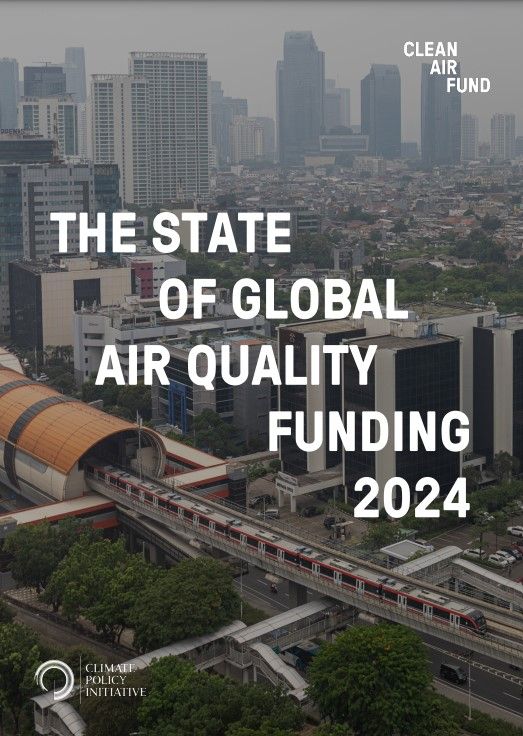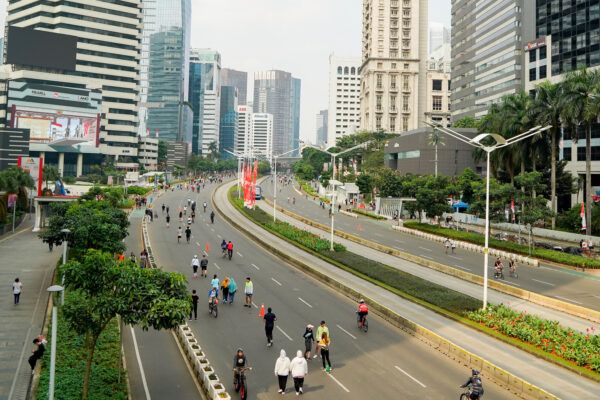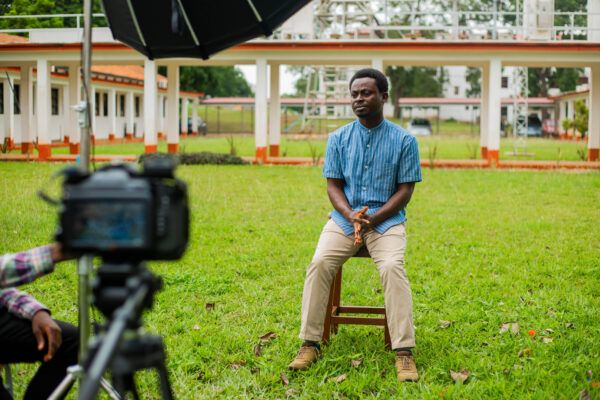
Want to read the latest version of this report? Check out the 2025 edition of The State of Global Air Quality Funding
Over 8 million deaths are attributed to poor air quality every year. From loss of productivity and diminished crop yields to the health costs of treating conditions like cancer and dementia, the cost of inaction on air pollution runs into the trillions.
Our sixth annual report is the only global analysis of projects funded by international development donors to tackle air pollution. Based on the latest publicly available data, this report maps the outdoor air quality funding landscape across international development funding, including climate finance. The research identifies how governments, and bilateral and multilateral development finance institutions (DFIs) can maximise their resources for people, planet and economy.
Produced with Climate Policy Initiative, this analysis provides a transparent and robust evidence base for policy makers, funders and campaigners.
In 2018-2022:
1% of international development funding went to clean air projects
3% of global public climate finance went to clean air projects
Even as countries pledge to reduce their emissions, increase their climate change ambitions and transition away from fossil fuels, the figures tell a different story. International public funding does not come close to meeting the scale of the challenge or unlocking the significant opportunity of investment in air quality. What funding exists often does not reach the most affected geographies, communities and vulnerable people. It doesn’t have to be this way.
Adalberto Maluf, National Secretary of Urban Environment and Environmental Quality in Brazil and co-chair of the Climate and Clean Air Coalition (CCAC)
Key findings
1. Funding remains too low
Outdoor air pollution is massively underfunded compared to other development areas, receiving only 1% of all international development funding from 2018 to 2022. This underfunding persists despite severe health, climate and economic impacts. Toxic air is the largest environmental threat to public health worldwide.
In addition to the small pool of outdoor air quality funding, there is a larger pool of projects with air quality co-benefits. These projects achieve air quality improvements without that being an explicit objective (often focused on development or climate action in sectors and sub-sectors that generate air pollution, such as energy generation and transport).
2. Most polluted countries left behind
7 of the 10 most polluted countries are being left behind. Low-income countries, such as Chad and Somalia, receive much less funding than upper middle-income countries, such as Serbia and Costa Rica.
$2 per person spent on air quality in low-income countries
$73 per person spent on air quality in upper-middle-income countries
Many countries are also left behind in ‘funding deserts’. This leaves Africa, among other areas, without the vital assistance they need to address their air pollution challenges. For example, the combined clean air funding for all of Africa and the Middle East ($1.5 billion) was only a third of the funding channelled to one Asian country: the Philippines ($4.7 billion from 2018–2022).
| Country | Annual mean concentrations of PM2.5 (2021) | Overall air quality funding 2018-2022 ($ b) | Overall air quality funding per capita ($) | Share of global overall air quality funding |
| Bangladesh | 74.0 | 7.8 | 47.2 | 7% |
| India | 58.7 | 16.2 | 12.1 | 14% |
| Nepal | 51.7 | 0.5 | 16.0 | <1% |
| Pakistan | 44.7 | 1.1 | 4.7 | 1% |
| Mongolia | 36.0 | 0.9 | 297.0 | 1% |
| Myanmar | 35.0 | 0.0 | 0.5 | <1% |
| Rwanda | 32.4 | 0.0 | 1.6 | <1% |
| Cameroon | 31.0 | 0.4 | 14.4 | <1% |
| Bhutan | 30.6 | 0.0 | 2.3 | <1% |
| China | 30.2 | 5.5 | 4.0 | 5% |
Source: Air Quality Life Index
3. Reliance on loans hampers progress
Only 6% of Official Development Assistance (ODA) for air quality was given as grants. This comes in stark contrast to the average 63% grant funding within ODA.
92% of air quality funding was provided in the form of loans, of which only a third were provided at concessional rates. The high ratio of market-rate loans creates high costs for recipient countries. This will likely limit low-income, heavily-polluted countries from accessing this air quality funding.
What are the different types of funding?
Grant: A sum of money given to a government for a specific purpose without having to pay it back.
Loan: A sum of money that is lent to a country for future repayment of the principle amount plus interest.
Concessional loan: A loan that is provided at below market rate interest rates.
4. Opportunities for climate action missed
The air pollution and climate crises share many of the same causes and solutions. But less than 3% of international public climate finance from international development funders explicitly targeted air quality improvements from 2018 to 2022.
Case study: Air quality co-benefits in climate finance in Nairobi, Kenya
The problem: As a rapidly urbanising middle-income country, Kenya faces rising emissions and deteriorating air quality. Transport, waste mismanagement and biomass fuel burning are key sources of air pollution in the country’s capital city. Limited national monitoring capabilities hindered informed decision making and investments on climate change mitigation and adaptation strategies. Air quality
monitoring stations were often private or serving specific research purposes, lacking the scope and
data accessibility required for national planning.
The solution: in 2018, the Kenyan government secured $9.3 million funding from the Green Climate Fund and co-financers to develop a greenhouse gas (GHG) and short-lived climate pollutant monitoring network in Nairobi for improved compliance and stricter enforcement of emission standards. This was in addition to more comprehensive climate change reporting. This project aligns with multiple goals of the
Kenyan government. It directly supports Kenya’s “Vision 2030”, which aims to elevate itself to a
nation that provides a high quality of life in the next decade by reducing air pollution. The emissions
data collected will inform Kenya’s efforts to reduce GHG emissions by 32% by 2030 under the Paris
Agreement.
Impact:
Financing air quality makes climate finance more comprehensive. The Green Climate Fund considers a range of investment criteria when approving projects. Air quality has been specifically identified as an environmental co-benefit indicator under sustainable development potential criteria. Beyond directly meeting these criteria, this project also showcases the co-benefits of addressing air quality, especially in terms of reducing burdens on the healthcare sector and the economy at large. An estimated 2,100 deaths could be prevented if clean air interventions are implemented from 2030 to 2040. The cumulative impact of these interventions would also translate into an estimated $192 million savings, representing approximately 23% of Kenya’s total healthcare expenditure in 2022.
Further detail included in the full report.
5. Top 10 funders
Multilateral DFIs provided the largest share of air quality funding, making up 63% of the total over the five years from 2018 to 2022.
| Current ranking (2018-2022) | Previous ranking (2017-2021) | Funder | Overall funding ($ b) |
| 1 | 2 | European Investment Bank | 26.7 |
| 2 | 1 | Asian Development Bank | 19.7 |
| 3 | 3 | Japan International Cooperation Agency | 15.4 |
| 4 | 5 | World Bank Group | 6.0 |
| 5 | 4 | Asian Infrastructure Investment Bank | 4.8 |
| 6 | 6 | China Development Bank | 4.5 |
| 7 | 7 | Inter-American Development Bank | 4.4 |
| 8 | 8 | European Bank for Reconstruction and Development | 4.2 |
| 9 | 9 | Agence Française de Développement/PROPARCO | 3.7 |
| 10 | 10 | Green Climate Fund | 2.9 |
6. Black carbon can unlock climate and health benefits
For the first time this year, the report tracks funding for tackling black carbon (or soot), a super pollutant that impacts climate change and human health. Despite black carbon’s unique and powerful potential for co-benefits, projects explicitly tackling the pollutant received 0.1% of donors’ outdoor air quality funding ($18 million out of $16 billion from 2018 to 2022). Following the lead of efforts to curb methane emissions, a targeted focus on black carbon offers a route to maximise the climate, development and health benefits of international development finance.
7. Funding for fossil fuels grows
Funding for fossil fuel-prolonging projects increased by almost 350% from $1.2 billion in 2021 to $5.4 billion in 2022. This is a disappointing reversal of the promising downward trend reported last year.
8. Progress to build on
Our analysis also showcases positive steps taken by institutions. The UK’s Foreign, Commonwealth & Development Office (FCDO) committed to ending the preventable deaths of mothers, newborns and children by 2030 through a nearly £15 million programme, which includes tackling air pollution.
Earlier this year, the World Bank’s Multilateral Investment Guarantee Agency (MIGA) pledged $1 billion in financial guarantees to de-risk air quality projects in low- and middle-income countries. By increasing the creditworthiness of air quality projects, the World Bank will mobilise much needed private sector investment.
Recommendations for funders
We call on governments, and bilateral and multilateral development finance institutions to:
- increase the volume of air quality funding, and especially to expand low-cost (concessional) loans and grant funding.
- better target low-income countries with high levels of pollution and improve the geographic balance of their portfolios.
- improve the integration of air quality action into existing development spending to maximise the benefits of those projects.
- prioritise investments in tackling black carbon.
- set a positive example by cutting their fossil fuel-prolonging funding.

